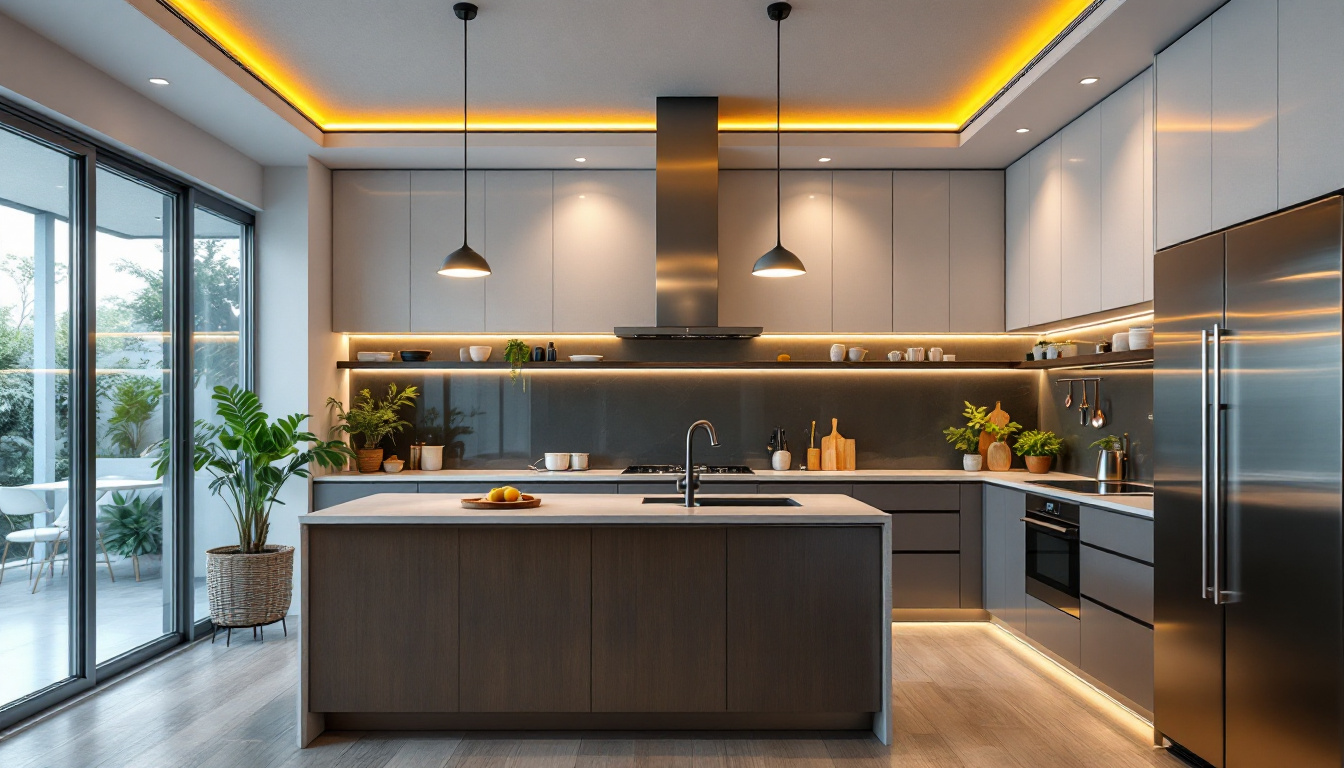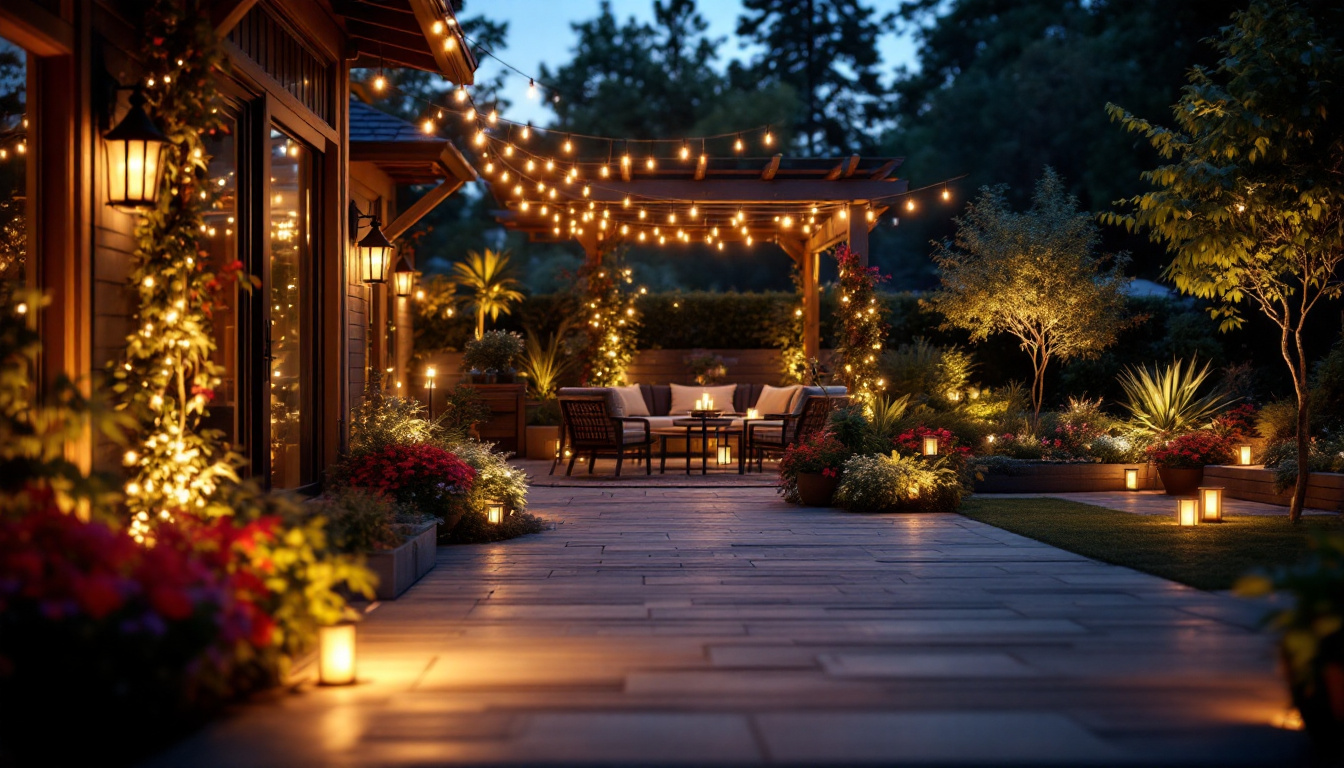

The kitchen is often referred to as the heart of the home, serving not just as a place for cooking, but also as a gathering spot for family and friends. As such, the lighting in this space plays a crucial role in creating an inviting atmosphere. For lighting contractors, understanding the nuances of kitchen lighting can significantly enhance the quality of their work.
Effective kitchen lighting should not only illuminate the space but also highlight its features and functionality. A well-lit kitchen allows for better visibility while preparing meals, ensures safety, and can even influence the mood of the entire home. Therefore, it is essential for lighting contractors to adopt a strategic approach when designing and installing ceiling lights in kitchens.
When considering kitchen lighting, it is important to recognize that there are three main types: ambient, task, and accent lighting. Each type serves a distinct purpose and should be integrated thoughtfully to create a harmonious lighting scheme.
Ambient lighting provides overall illumination and forms the foundation of a well-lit kitchen. This can be achieved through ceiling fixtures such as recessed lights or flush mounts. Task lighting, on the other hand, focuses on specific areas where activities such as cooking and food preparation take place. Under-cabinet lights and pendant fixtures are popular choices for task lighting. Lastly, accent lighting adds a decorative touch, drawing attention to architectural features or artwork within the kitchen.
The selection of fixtures is a critical aspect of kitchen lighting design. Lighting contractors must consider the style, size, and functionality of each fixture to ensure they complement the kitchen’s overall aesthetic. For example, pendant lights can serve as a stylish focal point above an island, while recessed lights can provide a clean, modern look.
Moreover, the choice of materials and finishes is equally important. Stainless steel, glass, and matte finishes can all contribute to the kitchen’s design theme. Contractors should also take into account the height of the ceilings and the layout of the kitchen when selecting fixtures to ensure optimal placement and effectiveness.
In addition to aesthetics, energy efficiency is a growing concern for many homeowners today. LED fixtures have become increasingly popular due to their longevity and lower energy consumption compared to traditional incandescent bulbs. Lighting contractors should be well-versed in the latest energy-efficient technologies and recommend products that not only enhance the kitchen’s ambiance but also reduce electricity costs over time. This consideration not only appeals to eco-conscious clients but also aligns with modern trends towards sustainability in home design.
Furthermore, the integration of smart lighting systems is revolutionizing kitchen environments. These systems allow homeowners to control their lighting remotely or set schedules for different times of day. For instance, dimmable lights can create a cozy atmosphere during family dinners, while brighter settings can be activated for meal prep. Lighting contractors should be prepared to discuss these innovative options with clients, helping them to understand how technology can enhance their kitchen experience and provide greater flexibility in lighting control.
In recent years, smart lighting technology has transformed the way kitchens are illuminated. Lighting contractors are now tasked with integrating these advanced systems into their designs, offering clients greater control and flexibility over their kitchen lighting.
Smart lighting solutions allow homeowners to adjust brightness, color temperature, and even the color of the light itself through mobile apps or voice commands. This level of customization not only enhances the kitchen’s functionality but also provides an opportunity for contractors to showcase their expertise in modern lighting technology. As kitchens become the heart of the home, the importance of creating the right ambiance cannot be overstated. Whether it’s a bright, energizing light for morning meal prep or a soft, warm glow for evening gatherings, smart lighting can adapt to the mood and activity, making it an essential component of contemporary kitchen design.
One of the key advantages of smart lighting is its ability to integrate seamlessly with home automation systems. Contractors should be familiar with various platforms, such as Google Home, Amazon Alexa, and Apple HomeKit, to ensure compatibility with the lighting solutions they install.
By connecting kitchen lights to a home automation system, homeowners can create personalized lighting scenes for different activities, such as cooking, entertaining, or relaxing. This not only enhances the user experience but also adds a layer of convenience that modern homeowners increasingly expect. Imagine a scenario where, with a simple voice command, the kitchen lights dim to a cozy level as dinner guests arrive, or brighten to full intensity when it’s time to tackle a recipe. This level of sophistication not only impresses visitors but also makes everyday tasks more enjoyable and efficient, showcasing the true potential of integrated smart home technology.
In addition to convenience, smart lighting solutions often prioritize energy efficiency. LED fixtures, for instance, consume significantly less energy than traditional incandescent bulbs, making them a sustainable choice for kitchen lighting. Contractors should emphasize the long-term cost savings and environmental benefits of using energy-efficient lighting options to clients.
Furthermore, smart lighting systems can be programmed to turn off automatically when a room is unoccupied, further reducing energy consumption. By promoting these features, contractors can position themselves as knowledgeable professionals who prioritize sustainability in their projects. Additionally, many smart lighting systems offer features such as scheduling and remote access, allowing homeowners to manage their energy use even when they’re not at home. This can lead to a more mindful approach to energy consumption, aligning with the growing trend of eco-conscious living. As clients become more aware of their carbon footprints, offering smart lighting solutions can set contractors apart as leaders in sustainable design, appealing to a demographic that values both innovation and environmental responsibility.
When designing a lighting scheme for kitchen ceilings, several factors must be taken into account. These considerations can greatly influence the effectiveness and aesthetic appeal of the lighting installation.
First, the layout of the kitchen should dictate the placement of fixtures. Open-concept kitchens may require a different approach than those with defined spaces. Additionally, the color palette and materials used in the kitchen can impact the type of lighting that will work best. For instance, a kitchen with dark cabinetry may benefit from brighter, more focused lighting to create contrast and depth.
The height of the ceiling plays a significant role in determining the scale and type of fixtures used. In kitchens with high ceilings, larger pendant lights or chandeliers can create a dramatic effect, while lower ceilings may require flush mounts or recessed lighting to avoid overwhelming the space.
Contractors should also consider the height at which fixtures are installed. For example, pendant lights should be hung at a height that allows for unobstructed sight lines and easy movement around the kitchen. This attention to detail ensures that the lighting not only looks good but also functions effectively.
Layering different types of lighting is essential for creating a versatile kitchen environment. By combining ambient, task, and accent lighting, contractors can provide clients with a range of lighting options suitable for various activities.
For instance, during meal preparation, bright task lighting can be activated, while softer ambient lighting can be used for casual dining or entertaining. Accent lighting can highlight decorative elements, such as a beautiful backsplash or artwork, adding depth and interest to the space.
While designing and installing kitchen lighting can be rewarding, it is not without its challenges. Lighting contractors must navigate various obstacles to ensure a successful project.
One common challenge is dealing with existing electrical systems. Older homes may have outdated wiring or insufficient circuits to accommodate modern lighting solutions. Contractors may need to assess the electrical infrastructure and make necessary upgrades to support new fixtures, which can add complexity to the project.
Clients may have specific concerns regarding their kitchen lighting, such as energy efficiency, maintenance, and aesthetics. Addressing these concerns requires a thorough understanding of the products and technologies available in the market.
Contractors should be prepared to educate clients on the benefits of energy-efficient lighting and smart technology, as well as provide guidance on maintenance requirements. This proactive approach can build trust and confidence, leading to a more successful client-contractor relationship.
The lighting industry is constantly evolving, with new trends and technologies emerging regularly. Contractors must stay informed about the latest developments to remain competitive and provide clients with the best options available.
From innovative fixture designs to cutting-edge smart lighting systems, being adaptable and open to change is crucial for success in the lighting contracting business. Regular training and professional development can help contractors stay ahead of the curve and offer clients the most current solutions.
Kitchen ceiling lighting is a multifaceted aspect of home design that can significantly impact both functionality and aesthetics. For lighting contractors, understanding the various types of lighting, smart solutions, design considerations, and challenges involved in installation is essential for delivering exceptional results.
By adopting a comprehensive approach that encompasses these elements, contractors can create well-lit kitchens that not only meet the practical needs of homeowners but also enhance the overall ambiance of the space. As the demand for innovative lighting solutions continues to grow, lighting contractors who embrace these trends will find themselves well-positioned for success in the ever-evolving market.
Ready to elevate your kitchen lighting designs to the next level? At LumenWholesale, we provide lighting contractors like you with the finest spec-grade lighting products at prices that can’t be beaten. Say goodbye to local distributor markups and hello to a vast selection of industry-standard, high-performance lighting options. With free shipping on bulk orders, you can trust that you’re getting premium quality without any hidden costs. Enhance the heart of every home with the right lighting—efficiently, affordably, and smartly. Discover the ideal mix of quality, value, and convenience at LumenWholesale and secure the best value in wholesale lighting for your next project.

Discover the essential insights every lighting contractor needs to know about LED can lights.

Discover the essential insights every lighting contractor needs to know about outdoor LED lights.

Discover the latest trends in affordable 10-meter LED lighting that every contractor should know.

Discover how LED lighting solutions can transform your warehouse into an energy-efficient powerhouse.
Get notified when NEW deals are released.
Optimize your budget with wholesale discounts.
Only top-quality, specification-grade lighting products.
No additional costs at checkout - what you see is what you pay.
We understand the unique needs of contractors.